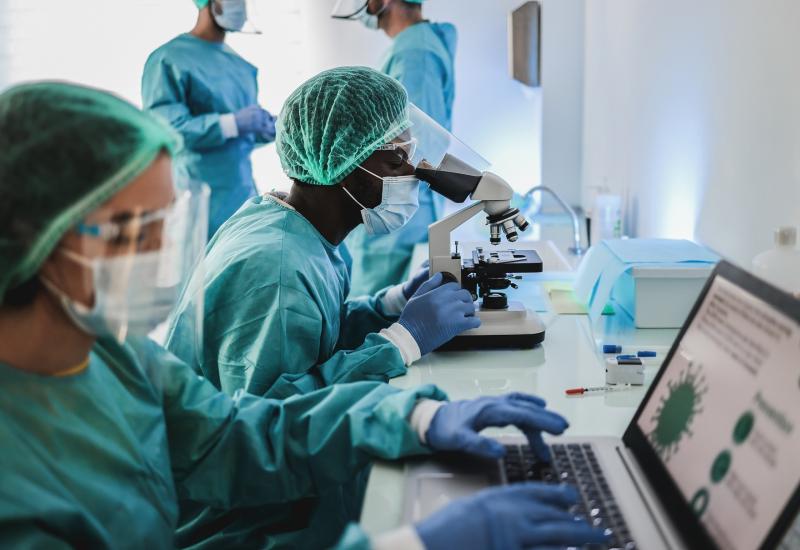
Lilly takes two shots at the Nectin goal
A second Lilly Nectin-4 ADC features among the latest phase 1 initiations.
A second Lilly Nectin-4 ADC features among the latest phase 1 initiations.

Lilly is unusual in developing not one but two antibody-drug conjugates that target Nectin-4, and as of this month both are in clinical trials. According to the latest listings on clinicaltrials.gov LY4052031 just started its first-in-human study, four months after its sibling project LY4101174 first entered the clinic.
Projects newly into the clinic also include Regeneron’s Muc16-targeting Car-T therapy bbT4015, and Pfizer’s anti-mesothelin ADC PF-08052666. Both are the results of low-profile partnerships – the former struck way back in 2018 with 2seventy bio’s legacy company Bluebird, and the latter done last December with China’s Harbour BioMed.
The Harbour deal was routed through the Nona Biosciences subsidiary, which Pfizer paid $53m up front for rights to PF-08052666, then coded HBM9033. Mesothelin has largely disappointed as an oncology target, but interest in it continues, and Pfizer’s clinical entry follows that of Johnson & Johnson, which took the T-cell engager JNJ-79032421 into phase 1 in February.
Nectin-4
Nectin-4, on the other hand, boasts an important marketed drug in the shape of Pfizer/Astellas’s ADC Padcev. For a while there were few competitors with the same mechanism, but work has picked up, and the current pipeline includes Bicycle’s zelenectide pevedotin and Corbus’s CRB-701/SYS6002, licensed from the Chinese company CSPC Pharmaceutical.
Lilly’s presence here is the result of several deals. LY4101174, which uses an exatecan (topoisomerase 1 inhibitor) payload, is derived from last year’s acquisition of Emergence Therapeutics and augmented with PSAR linker technology that came from another takeover, that of Mablink last October. LY4101174 went into the clinic in February.
Now Lilly’s second anti-Nectin-4 ADC, LY4052031, is to start human trials. LY4052031 also uses a topo1 payload (camptothecin-98), but has a different linker, GGFG, which Lilly licensed from ImmunoGen for $13m up front in 2022, before ImmunoGen was acquired by AbbVie.
The linkers of LY4101174 and LY4052031 are both cleavable, both molecules use a humanised, Fcγ-silent MAb, and both have a drug-to-antibody ratio of 8; both are for now being studied across several solid tumours including urothelial bladder cancer. One problem for any drug acting on Nectin-4 is how to compete against Padcev, which looks likely to become entrenched in the market quite quickly.
Lilly argues that both LY4101174 and LY4052031 have shown activity in preclinical models of MMAE resistance, and that quality could hold the key: MMAE is the payload employed by Padcev. However, for now it’s not clear whether Lilly sees a future for both molecules, or whether it’s simply hedging its bets.
Recently disclosed first-in-human studies*
| Project | Mechanism | Company | Trial | Scheduled start |
|---|---|---|---|---|
| JNJ-88998377 | Undisclosed | Johnson & Johnson | r/r B-cell non-Hodgkin’s lymphoma | 28 May 2024 |
| Unnamed | Claudin18.2 Car-NK | Hangzhou Rongu Biotechnology | ≥10% Claudin18.2-expressing gastric & pancreatic cancers | 13 Jun 2024 |
| 27T51/ bbT4015 | Muc16 Car-T | Regeneron (ex 2seventy bio) | Ovarian cancer | 28 Jun 2024 |
| LY4052031 | Anti-Nectin-4 ADC | Lilly | Nexus-01, solid tumours incl urothelial | Jun 2024 |
| Bria-OTS | Personalised immunotherapy | BriaCell Therapeutics | Late-line breast cancer | Jun 2024 |
| ANV600 | Non-blocking PD-1 x IL-2Rβ/γ fusion protein | Anaveon | Expand-1, +/- Keytruda in solid tumours | Jul 2024 |
| PF-08052666/ HBM9033 | Anti-mesothelin ADC | Pfizer/ Harbour BioMed | Solid tumours | 15 Aug 2024 |
Note: *projects newly listed on the clinicaltrials.gov database between 18 and 24 June 2024.
Meanwhile, Regeneron’s bbT4015, an anti-Muc16 Car-T therapy newly into human trials in ovarian cancer, is the lead project from a research collaboration with Bluebird Bio struck in August 2018 that saw Regeneron make a $100m equity investment in its partner.
Since then Bluebird has been split into two listed entities, with 2seventy bio taking on oncology cell therapy, and Bluebird being responsible for rare disease gene therapy. But Regeneron’s quiet work continued, and a couple of years ago bbT4015 was named as the lead programme.
In the meantime 2seventy ran into difficulties, and in January offloaded all its cell therapy R&D and 150 employees to Regeneron for just $5m, retaining only the Bristol Myers Squibb-partnered marketed Car-T therapy Abecma. bbT4015’s chances won’t be helped by the fact that the Muc16 target has been around clinically for years without scoring a major success.
3514













